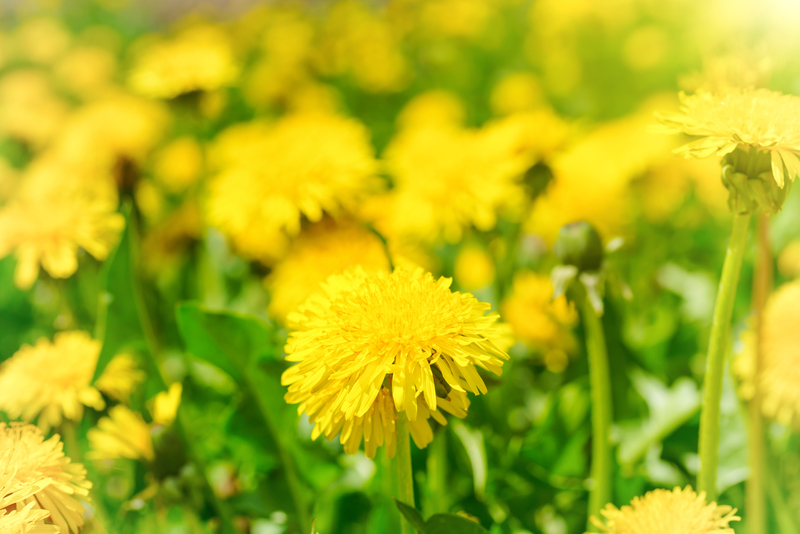Managing Japanese Knotweed in Your Garden
Posted on 27/07/2024
Managing Japanese Knotweed in YJapanese Knotweed (Fallopia japonica) is a highly invasive plant that can wreak havoc on your garden. Originally from East Asia, this aggressive species grows rapidly and can cause significant structural damage to buildings, roads, and other infrastructure. Managing Japanese Knotweed efficiently requires a thorough understanding of its growth habits and the most effective control measures. This article will guide you through the identification, impact, and management of Japanese Knotweed in your garden.
Identifying Japanese Knotweed
Before you can manage Japanese Knotweed, you need to be able to identify it. Key characteristics of this plant include:
- Broad, shield-shaped leaves with a pointed tip.
- Stems that resemble bamboo, with visible nodes and a reddish-brown hue.
- Clusters of small, white or cream-colored flowers that bloom in late summer.
Japanese Knotweed can grow up to 10 feet tall and forms dense thickets that are difficult to penetrate. Its root system, or rhizome, is extensive and can extend up to 10 feet deep, which makes eradication challenging.

The Impact of Japanese Knotweed
Unchecked growth of Japanese Knotweed can lead to several problems:
- Structural Damage: The plant's rhizomes can exploit cracks in concrete, tarmac, and other structures, leading to costly repairs.
- Ecological Disruption: Japanese Knotweed can outcompete native plants, reducing biodiversity and altering local ecosystems.
- Property Devaluation: The presence of Japanese Knotweed can negatively affect property values and complicate the sale process.
Effective Management Strategies
Managing Japanese Knotweed requires a multifaceted approach. Here are some effective strategies:
Chemical Control
Herbicides, especially those containing glyphosate, are effective in controlling Japanese Knotweed. However, you must use them cautiously:
- Apply herbicides during the late summer when the plant is actively transporting nutrients to the rhizomes.
- Ensure proper coverage by applying the herbicide directly to the leaves and stems.
- Follow all safety instructions and local regulations regarding herbicide use.
Mechanical Control
Physical removal is another option, though it requires persistence:
- Excavate the entire root system, including rhizomes, to prevent regrowth.
- Dispose of excavated material responsibly to avoid spreading the plant to other areas.
- Regularly monitor the site for new growth and remove any emerging plants promptly.
Biological Control
Biological control involves using natural predators to manage Japanese Knotweed:
- The psyllid insect, Aphalara itadori, has shown promise in controlling Japanese Knotweed by feeding on its sap.
- This method is still under research and may not be readily available for home gardeners.
Pros and Cons of Japanese Knotweed Management
Understanding the advantages and disadvantages of different management strategies is crucial:
Pros
- Effective control restores biodiversity and improves the aesthetic value of your garden.
- Early management prevents structural damage and reduces overall costs.
Cons
- Chemical control can harm non-target plants and negatively impact soil health.
- Mechanical control is labor-intensive and may not be feasible for large infestations.
- Biological control methods are still in development and may not be available for immediate use.
Top Tips for Managing Japanese Knotweed
- Start management efforts as soon as you identify the plant.
- Combine multiple control methods for the best results.
- Regularly monitor your garden for signs of regrowth and act promptly.
- Educate yourself on local regulations regarding disposal and control of invasive species.
- Consider consulting with a professional for severe infestations.

Key Takeaways
- Japanese Knotweed is a highly invasive species that requires prompt and persistent management.
- Identifying the plant and understanding its impact is crucial for effective control.
- Chemical, mechanical, and biological control methods each have their pros and cons.
- A multifaceted approach and regular monitoring increase the chances of successful eradication.
Conclusion
Managing Japanese Knotweed in your garden is no small task, but with early detection and a comprehensive management plan, you can protect your property and restore your garden's beauty. By combining chemical, mechanical, and biological control methods, you can effectively combat this invasive species. Regular monitoring and prompt action are key to preventing regrowth and achieving long-term success. Armed with the information provided in this article, you're well on your way to reclaiming your garden from Japanese Knotweed.






